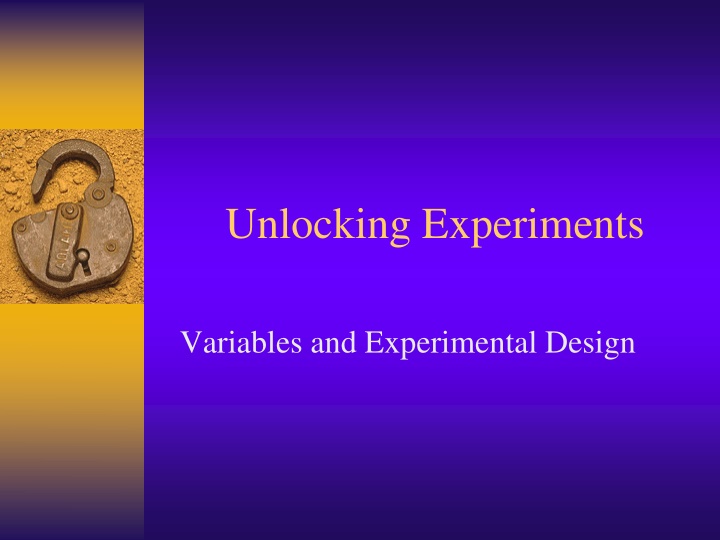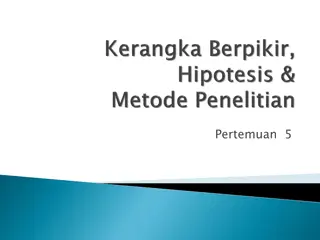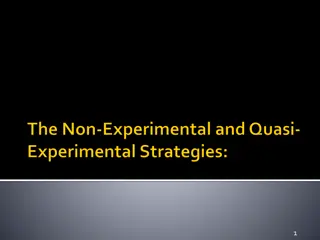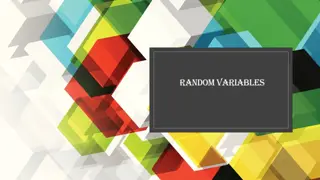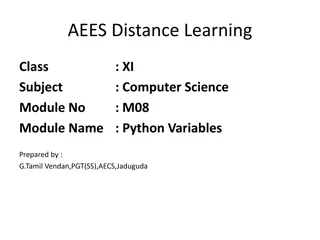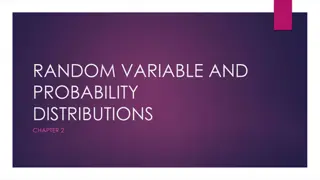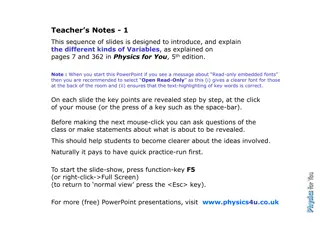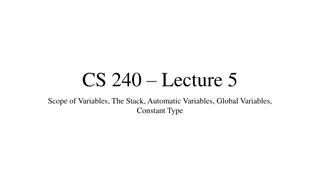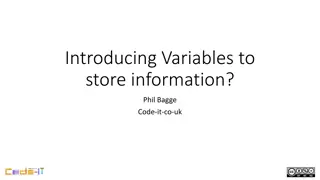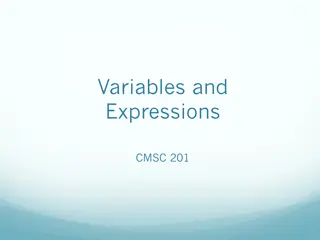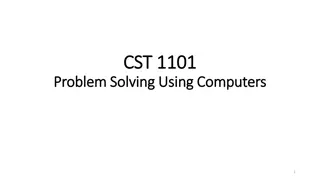Experimental Variables and Design
Explore the concept of variables in experiments, including independent, dependent, and controlled variables. Learn how to identify and apply them in investigations, such as determining the impact of different ages on puzzle-solving speed. Discover the key elements essential for conducting fair and valid experiments.
Download Presentation

Please find below an Image/Link to download the presentation.
The content on the website is provided AS IS for your information and personal use only. It may not be sold, licensed, or shared on other websites without obtaining consent from the author.If you encounter any issues during the download, it is possible that the publisher has removed the file from their server.
You are allowed to download the files provided on this website for personal or commercial use, subject to the condition that they are used lawfully. All files are the property of their respective owners.
The content on the website is provided AS IS for your information and personal use only. It may not be sold, licensed, or shared on other websites without obtaining consent from the author.
E N D
Presentation Transcript
Unlocking Experiments Variables and Experimental Design
Identifying Variables and Designing Investigations Cause and Effect
Variables What is a variable?? an element, feature, or factor that is liable to vary or change: In Math a variable is an alphabetic character representing a number (like x or y) In Science a variable is any factor that can be controlled, changed, or measured in an experiment. What are the 3 kinds of experimental variables?
Independent Variable something that is changed by the scientist What is tested What is manipulated I am going to look to see what happens when I change how long I sleep each night. Turn to your neighbor and discuss what is the independent variable in this experiment and what is missing from this experiment
Dependent Variable something that might be affected by the change in the independent variable What is observed What is measured The data collected during the investigation Using the previous example I might measure my mood as depending on the independent variable the number of sleep hours.
Controlled Variable a variable that is not changed Also called constants Something that could be changed but is not. Allows for a fair test so you know what happened is as a result of the changes you made. Using our previous example a controlled variable could be that all students slept in clean sheets
Identify the variables in this investigation. Puzzle Experiment Students of different ages were given the same jigsaw puzzle to put together. They were timed to see how long it took to finish the puzzle. Get up and turn to the nearest person in the next table to discuss. Write down your answers. Practice explaining how you came up with the answer.
What was the independent variable? Ages of the students was the independent variable Why? Different ages were tested by the scientist The scientist wanted to see if age had an effect. The scientist wanted to see if age caused a measurable change in outcome.
What was the dependent variable? The time it to put the puzzle together was the dependent variable The time was observed and measured by the scientist.
What was a controlled variable? Same puzzle was the controlled variable. All of the participants were tested with the same puzzle. It would not have been a fair test if some had an easy 30 piece puzzle and some had a harder 500 piece puzzle. It surely would have taken the 500 piece puzzle subject longer.
Physics Experiment Electromagnetic Experiment An investigation was done with an electromagnetic system made from a battery and wire wrapped around a nail. Different sizes of nails were used. The number of paper clips the electromagnet could pick up was measured.
What are the variables in this investigation? Independent variable: Sizes of nails These were changed by the scientist Dependent variable: Number of paper clips picked up The number of paper clips observed and counted (measured) Controlled variables :Battery, wire, type of nail None of these items were changed
Another Experiment Identify the variables The higher the temperature of water, the faster an egg will boil. Get up and turn to discuss with a new neighbor The variables are : Independent variable temperature of water Dependent variable time to cook an egg Controlled variable type of egg
Ecology Experiment The temperature of water was measured at different depths of a pond. What are the variables? Independent variable depth of the water Dependent variable temperature Controlled variable thermometer
Designing Investigations The greater the amount of soap in a soap and water mixture, the bigger a soap bubble can be blown. Design an investigation to test this. Identify the variables What exactly will be changed? How will it be changed? What exactly will be measured? How will it be measured?
Writing Hypothesis The greater the amount of soap in a soap and water mixture, the bigger a soap bubble can be blown. If independent changes and how, then the dependent variable will change and how. If the amount of soap is increased, then a bigger soap bubble will be blown.
Hypothesis A hypothesis is a possible answer to a scientific question. You base a hypothesis on observations you make and information you gather. A hypothesis must be testable. An experiment is used to test a hypothesis. The results of the experiment help you to decide if your hypothesis is correct.
Hot Asphalt For example, you may have observed that an asphalt driveway feels hotter than a concrete sidewalk on a sunny summer day. Your hypothesis might be: Dark-colored objects absorb more sunlight and get hotter than light-colored objects. If dark-colored objects absorb more sunlight the dark colored objects will get hotter than light-colored objects.
Write a Hypothesis for an Experiment McKenna had 10 identical iron nails. She painted five of the nails and left the others unpainted. She put all the nails in a plastic tray and placed the tray outdoors. She observed the nails each day. After 3 days, all the unpainted nails had rust on them, but no painted nails showed signs of rusting. On day 30, rust began to show through the paint on two of the painted nails. Five days later, all of the painted nails showed signs of rusting.
Design and Write Hypothesis The farther a ball drops, the higher it will bounce. Design an investigation to test this. Identify the variables What exactly will be changed? How will it be changed? What exactly will be measured? How will it be measured? Write a hypothesis as an if then statement.
